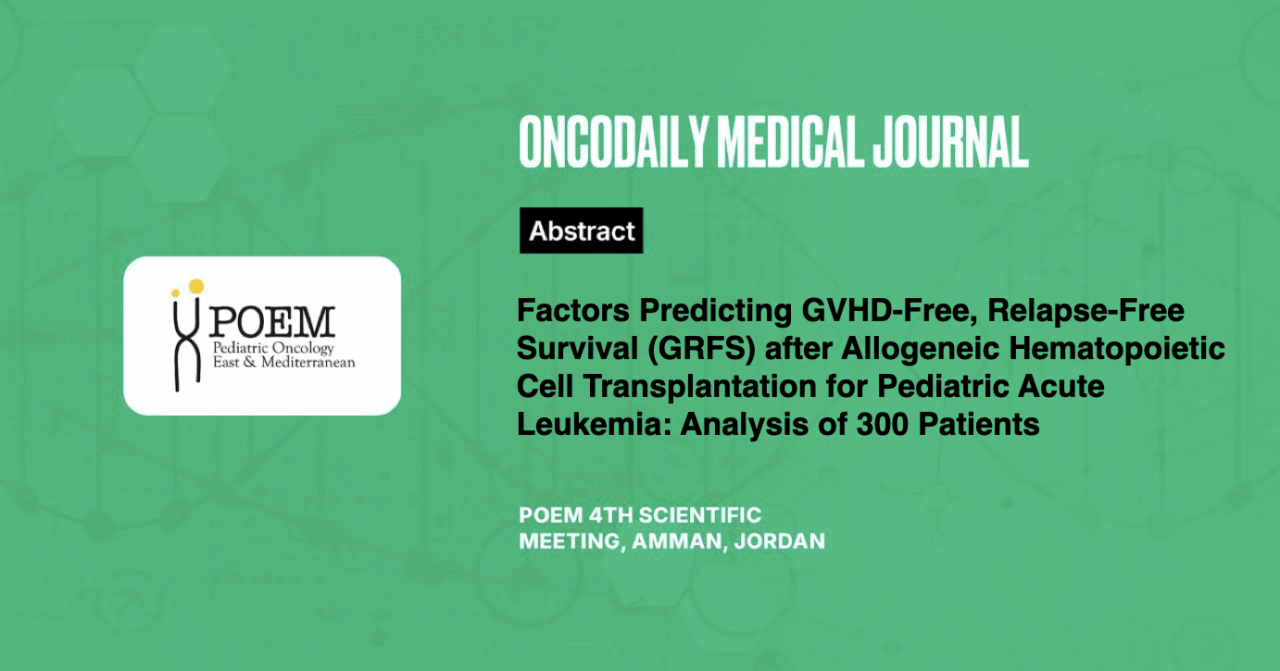Factors Predicting GVHD-Free, Relapse-Free Survival (GRFS) after Allogeneic Hematopoietic Cell Transplantation for Pediatric Acute Leukemia: Analysis of 300 Patients
Abstract
Introduction: Allogeneic hematopoietic stem cell transplantation (HCT) is the only curative option for high-risk hematological malignancies. The most common causes of treatment failure after HCT are relapse, GVHD, and non-relapse mortality. A composite endpoint that measures survival free of negative events may be useful to determine the success of HCT.
Methodology: We assessed GVHD and relapse-free survival (GRFS) where the events were defined as acute GVHD (grade 3-4), moderate to severe chronic GVHD, relapse of primary disease, or death of any cause in pediatric patients who received an allo- HCT between January 2003 and August 2023 at our center.
Results: We reviewed 300 patients (median age at transplantation, 10 years; range, 0.6-18); median follow-up, 59 months (range, 1-247). 292(97%) patients received myeloablative conditioning, and 246(82%) received PBSC as a stem cell source. Donor type was HLA-matched related (MRD, n=209, 70%), unrelated UCB (n=23, 7%), and mismatch related donor (n=68, 23%). The most common indications for transplant were ALL (n= 181, 60%), and AML (n=119, 40 %). The 1-year survival estimates were as follows: GRFS, 46 %±2.9; EFS,70%±2.7; OS, 77% ± 2.4, and the 3-year estimates were: GRFS, 39%±2.9; EFS, 60%±2.9; OS, 62%±3. Using GRFS as endpoint and the COX proportional-hazards model to identify independent prognostic factors; in Univariate analysis, disease status at Transplant (Tx) by MRD and ASBMT-RFI were predictive of better outcome. Multivariate COX regression analysis identified disease at Tx risk by MRD as independent prognostic factor for better GRFS (MRD- vs MRD +ve, HR:4.1; 95% CI: 2.8-6; p<0.001), (MRD- vs non remission, HR:8.4; 95% CI: 4-16; p<0.001).
Conclusion: Our results suggest that refined GRFS is a more robust endpoint to evaluate HCT outcomes. It represents ideal recovery following HCT, without continuing morbidity. GRFS can best be predicted by disease risk.





